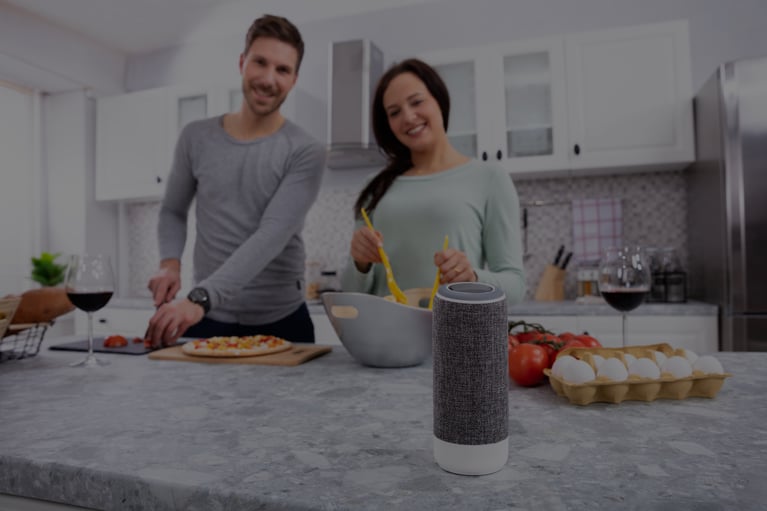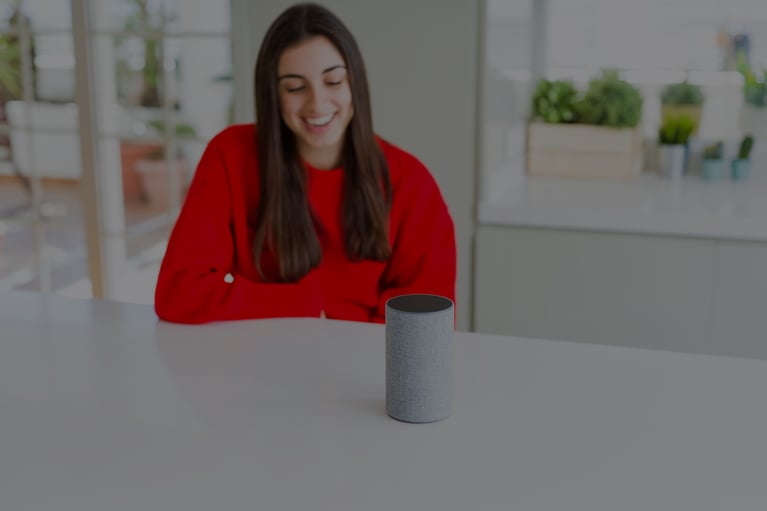Alex Farr

It’s official: we talk to computers and computers talk to us.
An entire family, from young to old, can ask devices for the weather or to play their favorite track. Gone are the days where we’d have to pause our food prep to search for a recipe online or pull the car over to get directions to the nearest gas station.
We live in an age where we can order a pizza, turn on the living room lights, and book a dentist appointment all by talking to Google, Cortana, or Alexa.
Voice is changing the way we go about our daily lives. It should be no surprise to anyone that voice is changing the way in which we search as well. We don’t solely type keywords. We expect smart devices to decipher natural language, so we talk to them like they are human beings, using conversational phrases.
Search has long been one of the top use cases for digital assistants as they’ve made their way into our homes, phones, cars, and workplaces, and consumers have been getting familiar with its benefits.
Speed, ease, and convenience - along with the increasing adoption of voice-activated technology - are the reasons behind why consumers are using voice and why voice search is growing.
If you’re yet to use voice search, you’re now in the minority. A recent survey from Microsoft found that 72% of people had used voice search through a digital assistant.
As many as 21% of consumers are using it every week.

WHAT ARE PEOPLE USING VOICE SEARCH FOR?
Currently, the top use case for voice search is users asking for ‘quick facts’. Though, here are some of the other ways people are using voice search according to Microsoft:
- Asking for directions — 65%
- Searching for a business — 47%
- Researching a product or service — 44%
- Comparing products or services — 31%
 Digital assistants may still spend most of their time telling us why the sky is blue or which building in the world is tallest, but they‘re increasingly talking to us about businesses, products, and services too.
Digital assistants may still spend most of their time telling us why the sky is blue or which building in the world is tallest, but they‘re increasingly talking to us about businesses, products, and services too.
In the last 12 months, 58% of consumers have used voice search to find phone numbers, addresses, directions, opening hours, and more for local businesses like restaurants (51%), grocery stores (41%), hotels (30%), and doctors (28%).
46% of voice search users look for local business information at least once a day. That’s just one of the reasons you need a voice strategy now.
HOW ARE PEOPLE PERFORMING VOICE SEARCH?
When you see people talking to their mobile devices, you can no longer assume they are talking to a person on the phone.
The convenience of voice means search takes place across devices, but mobile is king: 60% of mobile searchers use voice search at least “some of the time” and over 20% of the searches made in the Google app are done by voice.
 Typing on mobile is typically more difficult than on other devices, which is one likely reason mobile tops the list - but people are even performing voice searches on desktop. 25% of the searches on the Windows 10 taskbar on desktop devices are via voice.
Typing on mobile is typically more difficult than on other devices, which is one likely reason mobile tops the list - but people are even performing voice searches on desktop. 25% of the searches on the Windows 10 taskbar on desktop devices are via voice.
Being able to get instant answers to questions anytime, anywhere - whether you’re in the office, on public transport, or at the gym - is becoming the new norm. And as voice search continues to improve in leaps and bounds, you can expect usage to continue to increase across devices.
If you’re unfamiliar with VEO (Voice Search SEO), it will benefit you greatly to start learning about it now.
HOW ARE BUSINESSES ADAPTING TO VOICE SEARCH?
An Adobe survey of over 400 business decision-makers found that 91% are already making significant investments in voice. While 22% had protected their brand and ensured users get the right answers about their business, services, and products by launching their own Voice App.
Securing your brand’s voice domain is the first order of business in designing a branded Voice App.
For businesses heavily relying on search engines to retrieve and repeat information from the web, voice search brings a number of new challenges and a whole host of new SEO headaches for businesses across the board.
Optimizing for traditional search is vastly different from voice. According to studies, the first organic search result on Google’s SERP gets up to 35.35% of clicks. In voice search, there is an even smaller window. There are only top three results for mobile and one result for smart speakers. Ranking at the top means everything. It’s become more important than ever to make sure your content - powered by web or a branded Voice App - gives users the answer they’re searching for. That content should stay within a framework of 2-3 sentences in which voice assistants can engage in a conversation with a user.
The way we talk to voice assistants has further implications: we don’t solely use keywords. We talk like human beings to computers using natural language. Businesses now need to consider how to optimize content for voice search - and longer, more conversational phrases or search terms.
WHAT’S NEXT
Throw out your keyboards. Voice search is here and it’s huge.

Mobile searches overtook desktop in 2015. In the next few years, voice will overtake mobile. And just as mobile transformed SEO, voice is now doing the same. The main difference? The stakes are higher in VEO than traditional SEO. With only up to three results on voice searches – if you don’t make the list, you won’t be seen, heard, or known.
We expect to see more and more companies launch their own branded Voice Apps to ensure they are visible on voice and to control the customer experience. When voice becomes the dominant search channel, search engines will act favorably to brands that provide the best experience - that involves having a Voice App.
The ship for getting ahead on voice hasn’t yet sailed. There’s still time to create your voice strategy and secure your brand’s voice domain. Once you’ve missed that opportunity, though, you’ll be forever playing catch up with your competitors. They’ll be the ones having conversations with your customers on voice.
Don’t become invisible on search.













